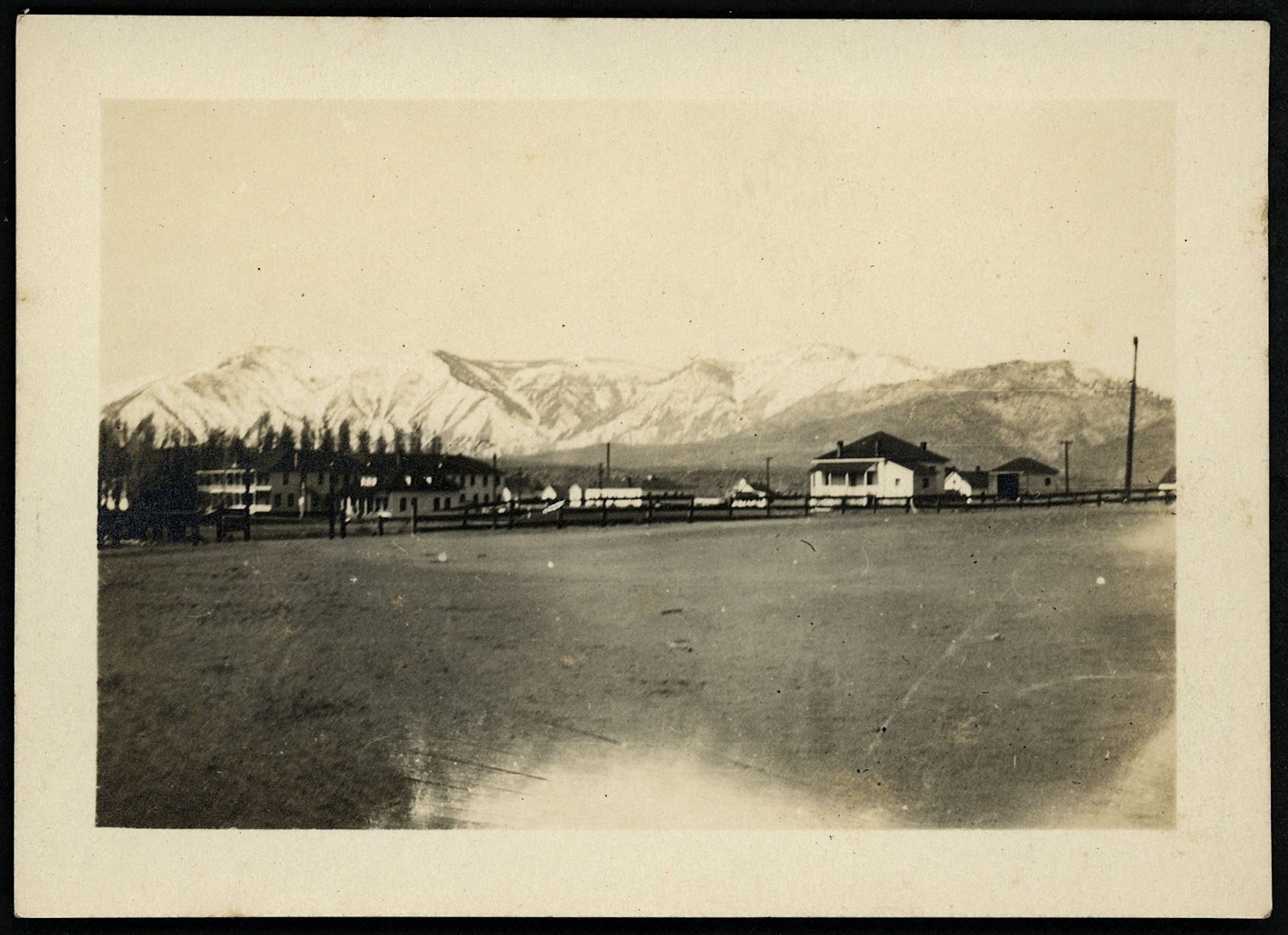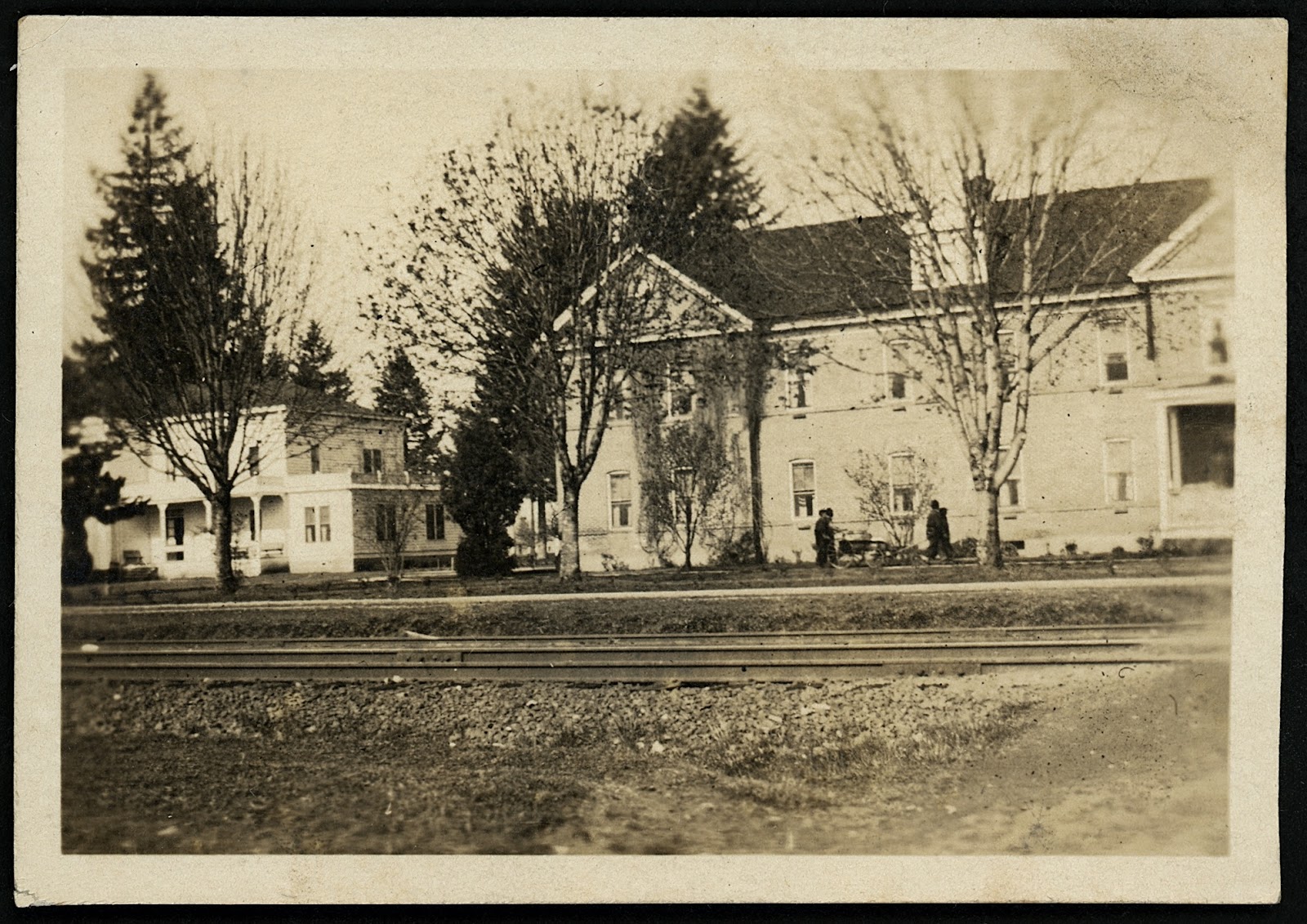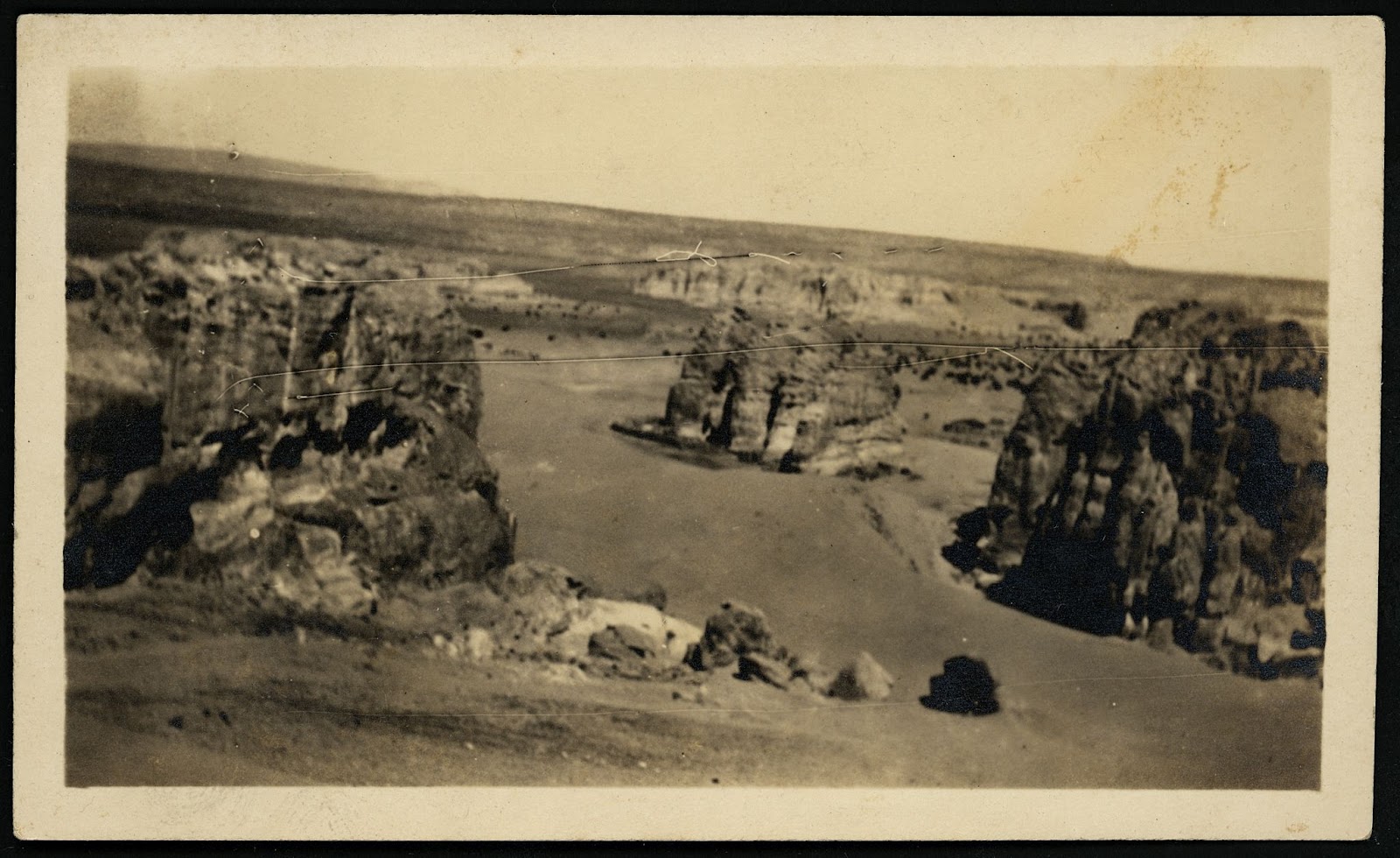During my time as an intern at the Legacy Center, I built on existing efforts to design a reparative description workflow and set of internal guidelines that addressed not only language in finding aids but access and outreach. The decision to revisit a collection is based on a commitment to provide respectful access to a collection and those represented in the collection. The Mary Pauline Root papers were donated to this repository in 1985, processed and digitized in 2016, and revisited in 2023. I reexamined the collection because it contains materials that reflect colonialist ideals, imperialist ideologies, and the genocide of Indigenous culture through Native American Boarding Schools.

Missionary House - Carson School, Stewart Nevada, Mary Pauline Root papers, WM-257, Box: 1, Folder: 11
Mary Pauline Root, MD (1859 - 1944) graduated from the Woman's Medical College of Pennsylvania in 1883. Root worked for the National Young Women’s Christian Association's Social Hygiene department during World War I and the United States Bureau of Indian Affairs (BIA) from 1919-21. She traveled around the United States and visited Indigenous communities and Native American Boarding Schools teaching “social hygiene.” From September through December 1920, Root taught and lectured in Michigan, Wisconsin, Minnesota, Nebraska, North Dakota, and South Dakota. From December to June 1921, Root lectured in Kansas, New Mexico, Arizona, Oklahoma, Nevada, California, and Oregon.
The materials describing missionary work in the collection are more focused on the Christian mission than the medical work performed. The collection does not hold details about the exact content of Root’s lectures.
I looked to the National Native American Boarding School Healing Coalition for historical context on US Indian boarding schools.
“The truth about the US Indian boarding school policy has largely been written out of the history books. There were more than 350 government-funded, and often church-run, Indian Boarding schools across the US in the 19th and 20th centuries. Indian children were forcibly abducted by government agents, sent to schools hundreds of miles away, and beaten, starved, or otherwise abused when they spoke their native languages,” (The National Native American Boarding School Healing Coalition).
After reviewing the collection, finding aid, and digitized materials, I researched the schools mentioned in the collection, particularly the schools where Root took photos of Indigenous children. The collection holds photographs of children in the U.S. Indian School Chemawa and Carson Indian School as well as a list of children’s names at the Rosebud Indian Boarding School.

One of the Girls Buildings, Chemawa, 1921, Mary Pauline Root papers, WM-257, Box: 1, Folder: 11
In 2014, Marsha Small, a Montana State University doctoral candidate, and Northern Cheyenne tribal member, spent time at the U.S. Indian School Chemawa for her master’s thesis: “A Voice for the Children of Chemawa Cemetery.” Using a ground-penetrating radar, Small discovered over 220 graves at the Chemawa Indian School’s cemetery. Small discovered that although some of these graves were documented, many were not. Small argues that the presence of undocumented graves indicates that there were more deaths at the U.S. Indian School Chemawa than previously indicated. According to the school’s records, the death of a student was a common occurrence and a prospect that terrified students throughout their time at the school. “Epidemics of tuberculosis, trachoma and influenza often swept through overcrowded dormitories at the boarding schools, where children were often malnourished and exposed to germ-infested conditions due to inadequate funding,” (Dadigan, 2016). As Small uncovered the graves at the Chemawa Cemetery, she prayed for the children who lost their lives in her Northern Cheyenne language and strove to learn their names and stories.
“Our homelands are the places where we’re taught everything, where we go to feel full and heal as indigenous people,” Small said. “For these children to be buried in an unknown land with an unknown prayer, I can’t think of a more horrific fate,” (Dadigan, 2016).
As archivists, we have an obligation to share all parts of history and not obscure or erase the past. Through my process of revisiting the Mary Pauline Root papers, I want to acknowledge the harm medical missionaries participated in when visiting Native American Boarding Schools. We removed digital access to photographs of Indigenous children because it is unlikely the children consented to be documented. As someone invested in reparative description, I am interested in exploring whether or not children can consent to have their image available digitally as it is a complicated and increasingly relevant issue. In editing the finding aid, I removed all aggrandizing and celebratory language about Root’s medical missionary work and included additional subject headings so that more researchers can find the collection. I documented my process and designed a set of guidelines for reparative description that addresses bias on behalf of archivists in the creation of finding aids and digitized records.

Rocks on the way to New Mexico, February 19th 1920, Mary Pauline Root papers, WM-257, Box: 1, Folder: 11
I thought about how access can be reimagined with respect as a priority. Providing greater access can look like reaching out to organizations to let them know we have the collection, digitizing and publishing documents, adding information about the collection to resource lists, or offering high-quality reproductions to other institutions or individuals upon request. Respect can also look like guided access. For example, removing online access to digitized materials, applying disclaimers, or only allowing research to be conducted on-site. Reparative archives work is a collaborative process, and I believe the most important step is listening to criticism, especially when it comes from communities who are still marginalized.
The stage of my reparative description process that I valued the most was taking the time to understand the context of the records. National American Boarding School Healing Coalition provides resources for education, including downloadable curriculums, advocacy, and healing. For those interested in expanding their understanding of the Native American Boarding Schools, I highly encourage further research through the National American Boarding School Healing Coalition.
Resources referenced in the creation of the Reparative Description Guidelines:
Citations
Dadigan, M. (2016, January 3). US: Unearthing the dark past of Native Boarding School. Human Rights | Al Jazeera. Retrieved April 13, 2023, from https://www.aljazeera.com/features/2016/1/3/unmarked-graves-discovered-at-chemawa-indian-school
The National Native American Boarding School Healing Coalition. (n.d.). US Indian boarding school history. The National Native American Boarding School Healing Coalition. Retrieved April 13, 2023, from https://boardingschoolhealing.org/education/us-indian-boarding-school-history/